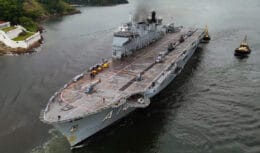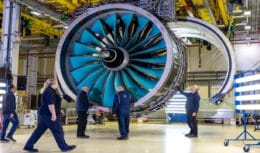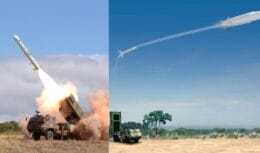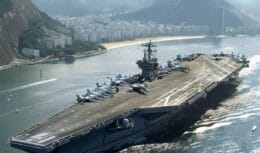
The responsible company is already making possible the possibility of making the hydrogen-powered hydrofoil available for cargo transport by sea in 2024
The company Boundary Layer Technologies, located in California, instead of building a ship, decided to work on the development of a hydrogen-powered hydrofoil. The hydrofoil, which received the name Argo, will arrive with the promise of revolutionizing the transport of goods by sea, with the aim of replacing air transport, at least on intra-Asian trade routes.
Read also
- Learn More Destinus, the hydrogen-powered hypersonic plane capable of transporting cargo between continents in less than two hours
- Airbus signs partnership to use A380 and test direct combustion engine powered by hydrogen
- Meet the hydrogen-powered bike that runs 300 km on just 2 bottles of water
- The US is on the verge of developing the first high-efficiency hydrogen-steam engine for commercial aviation
- Yamaha and Toyota launch the world's first eight-cylinder "V" engine powered entirely by hydrogen
Meet the hydrogen-powered Argo hydrofoil
According to company data, the Argo hydrofoil has a cruising speed capacity that can reach 40 knots (74 km/h), meaning that the hydrofoil can be up to twice as fast as a conventional cargo ship.
On this issue alone, it can already help a lot in reducing transport costs, even with the fact that the transport time in a cargo aircraft remains quite time consuming.
However, this only happens during the trip itself, because the complementary logistics of transport are much simpler. The hydrofoil also has a range of 1.500 nautical miles (2.780 km) and a carrying capacity of up to 200 tons.
Dimensions of Hydrofoil to Hydrogen
The Argo is about 33,5 meters long, which makes it very small compared to the largest cargo ship in the world, which is the OOCL Hong Kong, which is about 400 meters long and can accommodate up to 20.000 containers.
According to the CEO of Boundary Layer Technologies, Ed Kearney, the small size and cargo capacity can reduce the stay time from 3 days to just 2 hours, in addition to offering the ability to be able to dock anywhere. This allows the Argo hydrofoil to be able to face ports that are usually very congested, in addition to triggering, at the same time, a type of competition with air cargo travel times.
Argo Technical Sheet and the company's next steps
As previously mentioned, the Argo is 33,5 meters long, can reach a speed of up to 40 knots (74 km/h), has a range of 1.500 nautical miles (2.780 km), capacity for up to 200 tons and is powered by hydrogen.
So far, Boundary Layer Technologies has managed to complete the development of some components that are key to the hydrofoil's operation. However, the objective is to carry out large-scale tests, but only at the end of 2023, seeking to make a new cargo transport service on the Asian continent viable in mid-2024. However, the company is still looking for a partnership.
According to Per Karsten Stolle, the startup's strategic advisor, after hearing customer feedback on combining a zero-emission transport solution with cost reduction, this is a tipping point that could help achieve climate goals. Looking ahead, Boundary Layer Technologies is building a larger vessel dedicated to a trans-Pacific service mission. According to the company, there is a letter of intent of 180 million dollars with the Flexport digital dispatcher.












